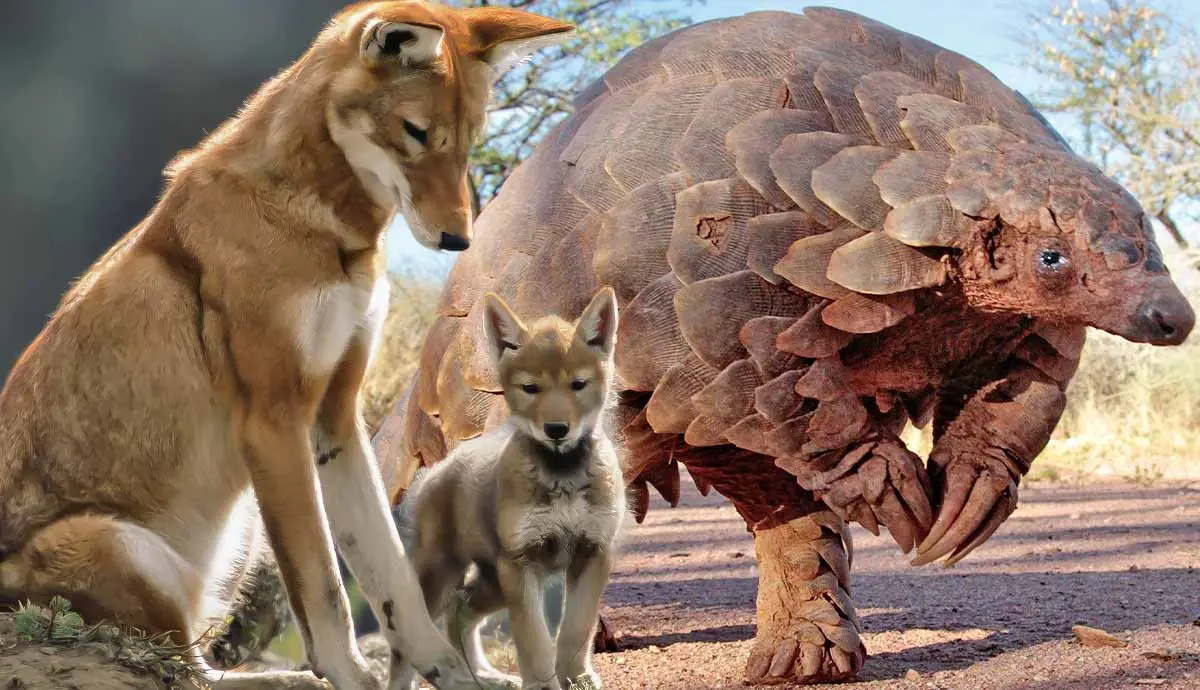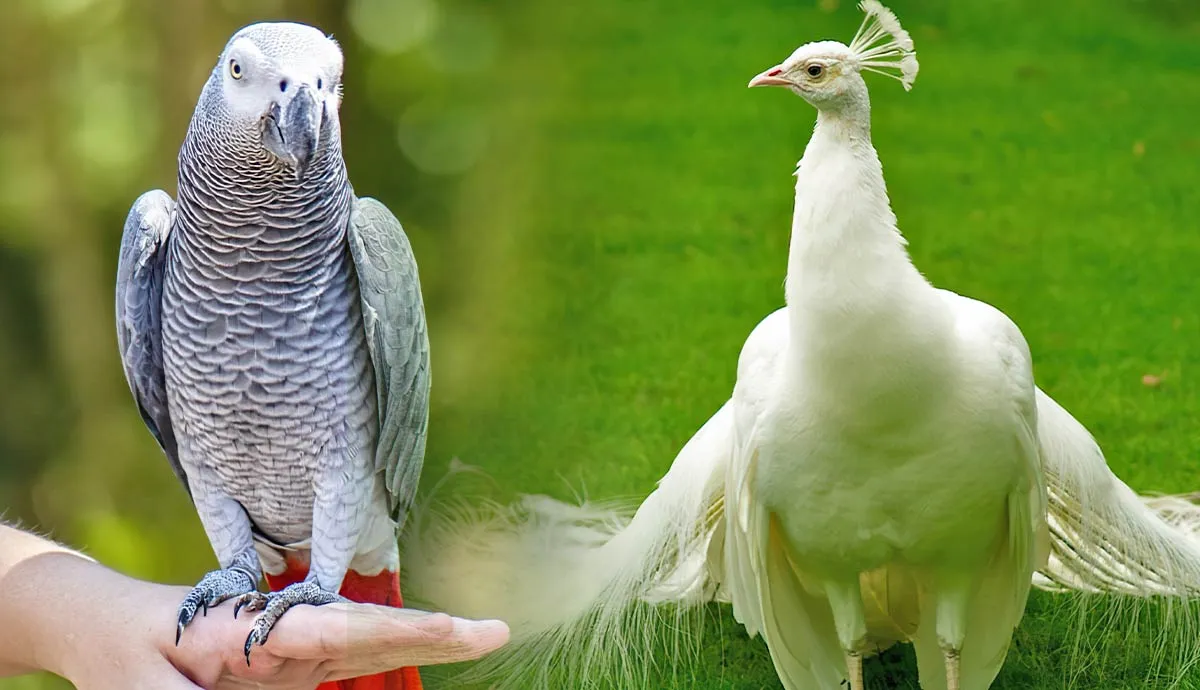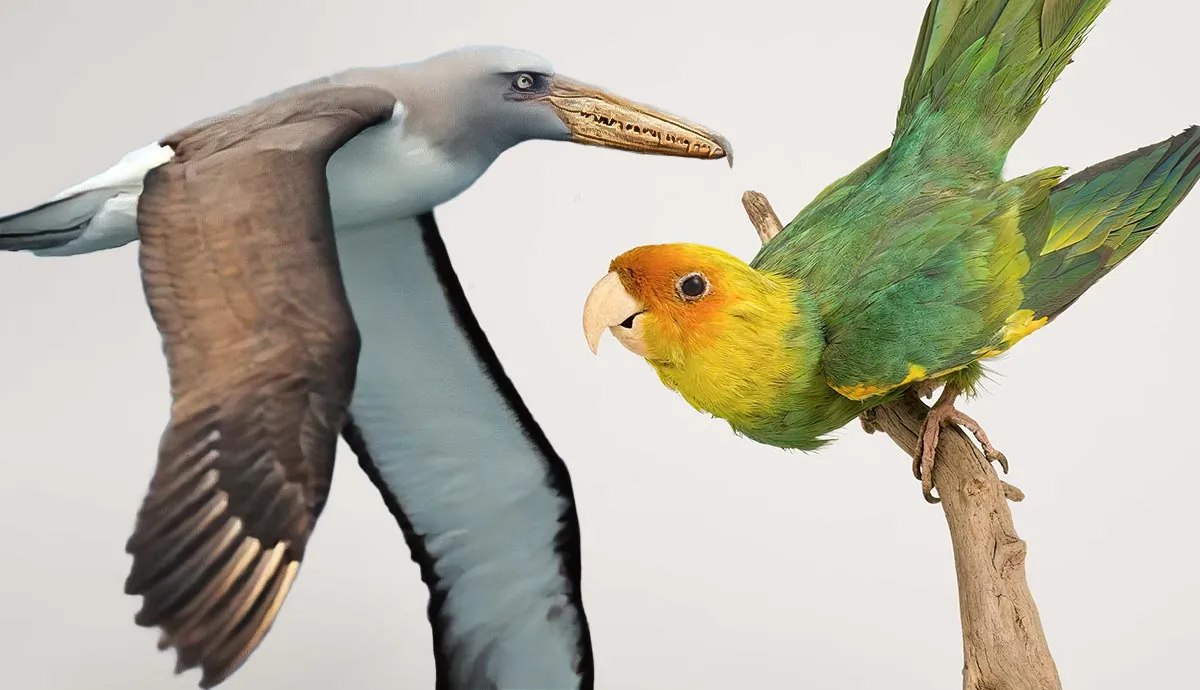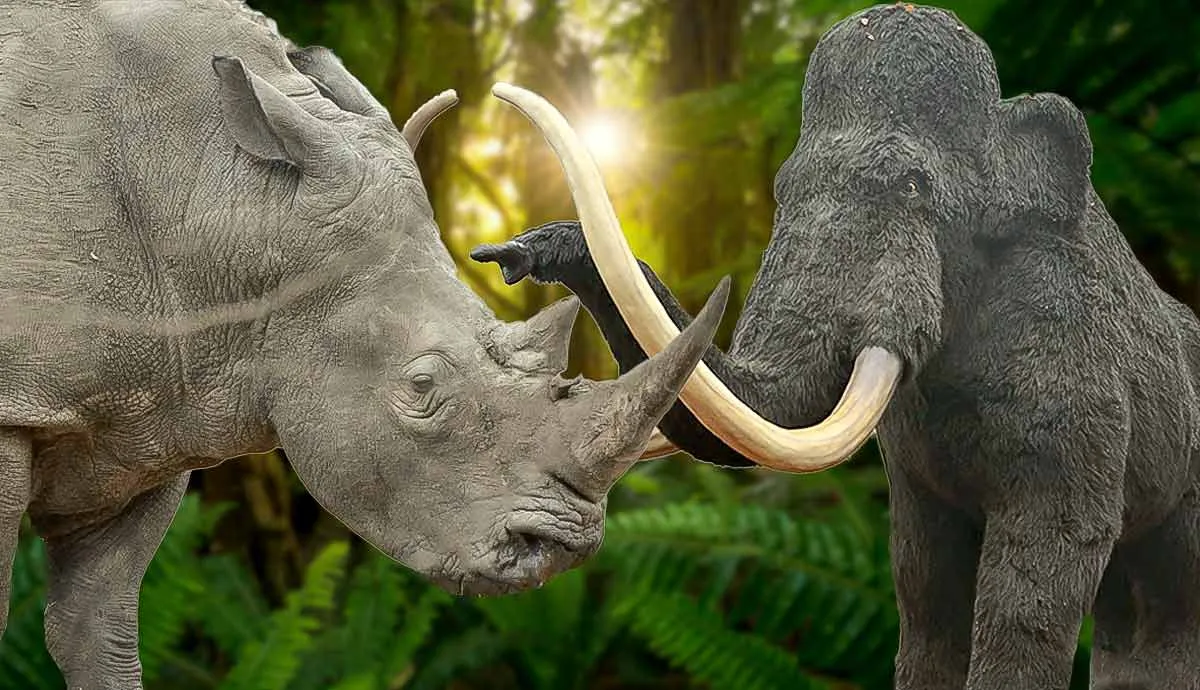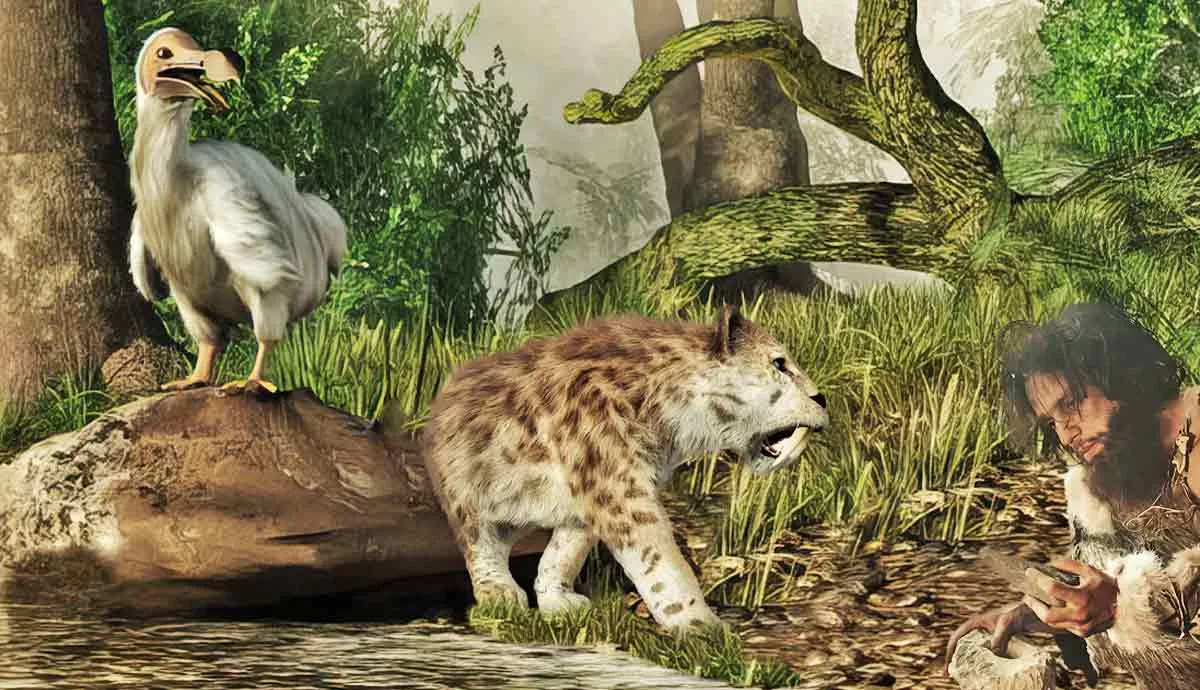Africa is the second largest and most populous continent, home to rich biodiversity. Unique biomes and landscapes range from ice-capped mountains to lush rainforests, open savannahs, and arid deserts. The continent is also home to a quarter of the world’s plant and animal species. Unfortunately, prolonged conflicts, industrialization, rapid deforestation, and climate change are devastatingly affecting wildlife across the continent.
5. Pangolin: ‘Wise Old Man’ of the Bushes

Africa is home to four species of pangolins. Unfortunately, it also has the title of the most trafficked mammal. Illegal wildlife trade drive sales of pangolins, and they can reach up to $20,000 in black market trade. Their scales are prized for their ‘healing’ properties. They are a popular ingredient in traditional medicine; sometimes, pangolins are hunted for their meat. Rapid deforestation is also not helping populations thrive.
The giant ground pangolin is the largest but rarest species of the African pangolin. They live primarily in forests and forest-savannah pockets in Central and West Africa. Adults can reach up to 1.5 m (1.6 yards) and tip the scale at 33 kg (72 lbs.), but these are occurrences. The population is declining and is listed as Endangered on the IUCN Red List.
Temminck’s ground pangolin is the most widespread of the four African species. These pangolins prefer to live in woodland and grassy savannah habitats and are most active at night. Their weight ranges between 7 and 12 kg (15—26 lbs.) and can reach a nose-to-tail length of 1.2 meters (47”). They are considered Vulnerable.

The small, white-bellied pangolin is listed as Endangered. Although reasonably widespread, they are not easy to find. Adults are small and range between 60 and 105 cm (23—41”) and weigh between one and two kilograms (2.2—4.4 lbs.) on average. They like foraging on the ground but quickly climb the nearest tree when disturbed. Their bellies and exposed skin are white. Their bodies have small scales with three points, contributing to their Latin name Phataginus tricuspis.
Lastly, the black-bellied pangolin, listed as Vulnerable, is arguably the most beautiful and smallest African species. Their large scales resemble an ombre hairstyle – the large black scales almost abruptly fade into an ochre border. An average adult will range between 85 and 110 cm (33 to 43 inches) in total length and weigh between one and two kilograms (2.2—4.4 lbs.). Their long tails can sometimes reach 60 centimeters (23.6”) which helps to identify them apart from their unique coloration.
Pangolins do not thrive in captivity, so you won’t see many of them in zoos. They quickly die when kept in captivity.
4. Okapi: The ‘Forest Giraffe’
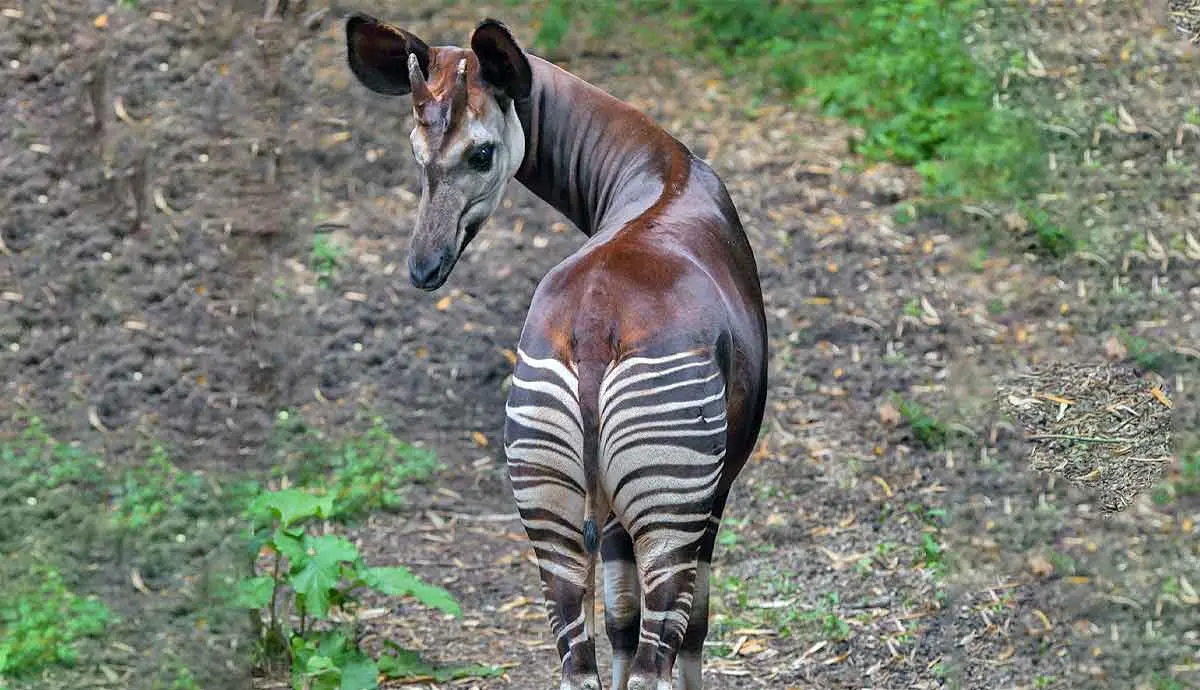
Although the Okapi looks more like a zebra, it is more closely related to the giraffe. They live in the Ituri Rainforest in the Democratic Republic of Congo (DRC). Unfortunately, mining, illegal logging, and illegal human occupation within and around protected areas threaten their natural habitat.
The ongoing use of snares to hunt okapis for their skin and meat further threatens populations. In some areas, okapis will end up in the pot as bushmeat. Their population has been in steady decline since 1995, and between 43 and 50% of the population has been lost between 1995 and 2007. They are listed as Endangered, but this may change to a higher stage as populations decline more.
3. Ethiopian Wolf – The World’s Rarest Canid

The Ethiopian wolf, also known as the Simien Jackal, is the rarest canid in the world, and only 197 adult individuals are still alive. Humans pose the greatest threat to these unique wolves through farming, military exercises, civil unrest, and agriculture. Livestock overgrazing also drives the population numbers down. These wolves sometimes hybridize with domestic dogs driving their numbers down more. Diseases like rabies and canine distemper also threaten populations – especially in Bale. Since 2008 the population has declined by 30% due to these diseases.
These wolves are family-orientated but hunt alone, unlike other wolf species. Their packs range between three and 13 individuals allowing them to defend a territory with enough mole rats and common grass rats to sustain the group. Sometimes they’ll hunt together to bring down young antelopes, hares, and lambs. They are an Endangered species.
2. Western Lowland Gorilla: Smallest Gorilla Species

The Critically Endangered Western Lowland Gorilla may be the smallest gorilla species, but it still possesses exceptional strength. An upright male can measure up to 1.8 meters (5’11”) and weigh around 270 kg (600 lb). On average, males weigh 140 kg (310 lbs) and females 90 kg (200 lbs).
Several factors affect populations: poaching for bush meat across central Africa is the primary cause of population decline. The second factor is infectious diseases like Ebola virus disease (EVD). Habitat loss is an emerging threat to these gorillas. Africa has become the new hub for palm oil plantations because of the ideal soil and temperature conditions coupled with enough rainfall. These plantations, unfortunately, fall within 78.8% of these gorillas’ natural habitat, which may lead to deforestation to grow the crop.
1. Black Rhino: Critically Endangered Due to Poaching
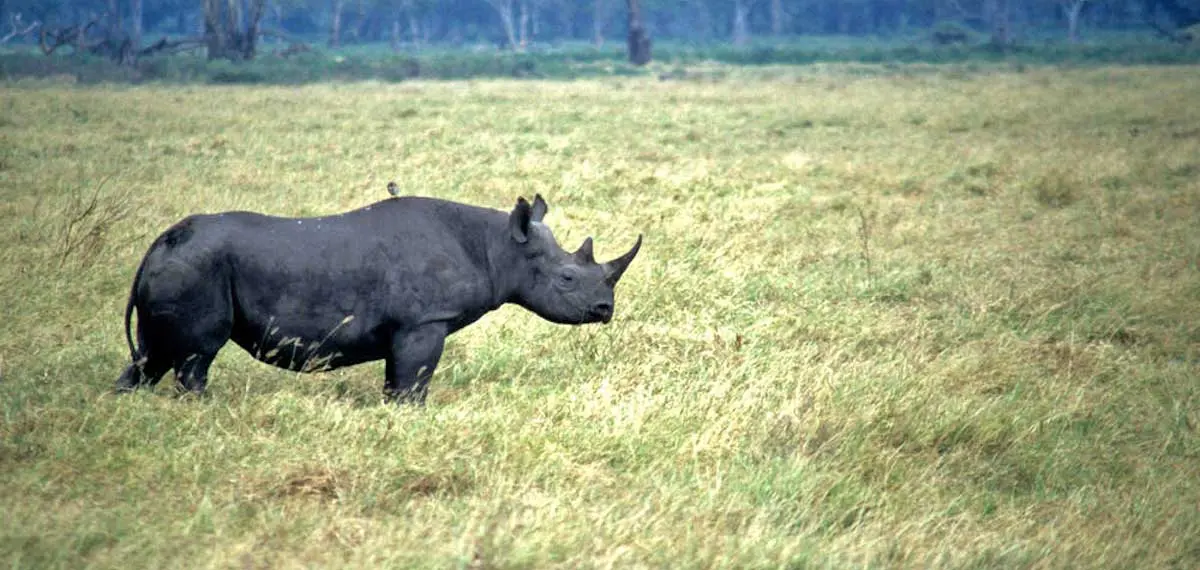
The black rhino is Critically Endangered. Between 1960 and 1995, numbers dropped by a staggering 98%. Persistent conservation efforts across Africa have helped these grazers to bounce back from the brink of extinction.
Poaching (illegal hunting) poses the biggest threat to their survival. Rhino horn is prized in traditional Chinese medicine to reduce fever. Their horns are also used to make ornamental items like bowls and bangles, and historically the horns were carved to make handles for ceremonial daggers (jambiyas) worn primarily in Yemen and some Middle Eastern countries. Illegal international trade of rhino horns continues to pose a threat to populations.
